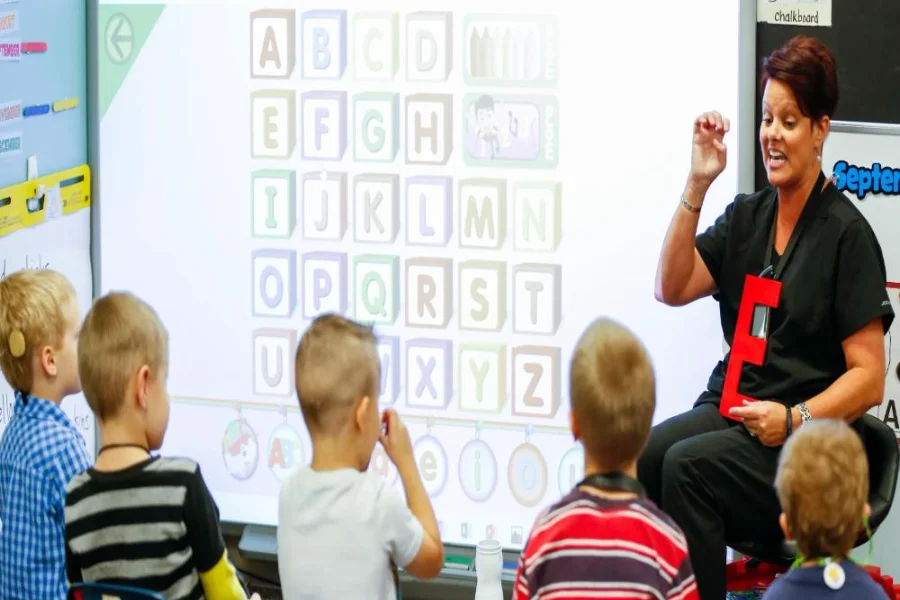How to Teach Phonics Sounds?

Source: leader
How to Teach Phonics Sounds?
In the journey of early childhood education, understanding “How to Teach Phonics Sounds?” is the key to developing literacy skills in young learners. This blog will explore effective strategies and tips on “How to Teach Phonics Sounds?” to educators and parents alike. Phonics sounds are not just the foundation of reading and writing; they are the building blocks that empower children to decode the world of words around them.
Whether you’re a seasoned educator or a parent looking to support your child’s reading journey, this guide will provide practical insights and simple approaches to make the teaching of phonics sounds both engaging and successful.
Table of Content
Understanding Phonics Sounds
Phonics sounds are the building blocks of reading. They are the sounds that letters and combinations of letters make. For instance, the sound /b/ is associated with the letter ‘B’. Understanding Phonics Sounds is essential before moving on to blending them into words.
Starting with the Basics
Begin with the alphabet. As Starting with the Basics is important, ensure that each letter’s sound is taught clearly. Avoid confusion by focusing on the sound rather than the letter name. For example, the letter ‘A’ makes the /a/ sound as in ‘apple’.
Introducing Short Vowels
Introducing Short Vowels is a good next step. These are the sounds vowels make in shorter, simpler words. For example, the /i/ in ‘kit’, the /a/ in ‘man’, the /e/ in ‘peg’, the /u/ in ‘bun’ and the /o/ in ‘hop’.
Progressing to Consonants
Progressing to Consonants is the next step after mastering vowels. Teach each consonant sound, using simple examples like /b/ for ‘bat’ and /m/ for ‘moon’.
Blending Sounds into Words
Once individual phonics sounds are understood, teach students to blend sounds to form words. For Blending Sounds into Words, start with simple CVC (consonant-vowel-consonant) words like ‘cat’, ‘dog’, ‘pen’, etc.
Utilizing Phonics Games
Utilizing Phonics Games can make learning phonics sounds more engaging. Use games that involve matching sounds to pictures or finding objects that start with a certain sound.
To get more details call / whatsapp @ +919869866277 / +919869546913.
To download the Phonics Course brochure, Click Here.

Source: phonicspower
Consistent Practice
Consistent Practice is key in learning phonics sounds. Daily reading and phonics exercises can reinforce what students learn.
Phonics Sound Resources
There are many Phonics Sound Resources available for teaching phonics sounds. Books, online programs, and educational apps offer structured ways to learn these sounds.
Teaching phonics sounds effectively lays the foundation for reading proficiency. Start with basic sounds, progress systematically, and use engaging methods. With consistent practice and the right resources, students can master phonics sounds and become confident readers.
How do I Become a Phonics Teacher?
Are you passionate about early childhood education? Do you often think How do I Become a Phonics Teacher? Do you doubt How to Teach Phonics Sounds? The Phonics Teacher Training Program offered by the Vidhyanidhi Education Society (VES) is an excellent pathway to achieve this goal. This program is meticulously designed to equip you with the necessary skills and knowledge to Teach Phonics Sounds effectively to young learners. Here’s an overview of what this comprehensive training on How to Teach Phonics Sounds entails:
Key Features of the Phonics Teacher Training Program:
18 Hours of Intensive Training
The program offers a compact yet thorough 18-hour intensive training course, ensuring you gain comprehensive knowledge in a focused time frame.
UK-based Synthetic Phonics Teaching Methodology
The course follows the popular UK-based Synthetic Phonics Teaching and Learning Methodology. This approach is renowned for its effectiveness to Teach Phonics Sounds and is widely adopted in various educational settings.
Innovative Teaching Aids
Lectures are delivered using audio-visual teaching aids. These modern tools enhance learning, making it more interactive and engaging.
Engaging Learning Materials
The program includes the demonstration of sounds with jingles, stories, and actions. These materials not only make the learning process enjoyable but also aid in better retention of phonics sounds.
Comprehensive Coverage of Sounds
You will get thorough practice with all 42 sounds, which includes both letter sounds and digraphs. This ensures a complete understanding of the phonics spectrum.
Practical Training with Mock Drills
To give you a real-world teaching experience, the program includes mock drills. These drills simulate classroom scenarios, preparing you for actual teaching situations.
Supportive Learning Environment
The program offers doubt-solving and question-answer sessions, allowing you to clarify any uncertainties and strengthen your understanding.
By enrolling in this Phonics Teacher Training Program, you’re not just learning How to Teach Phonics Sounds?; you’re becoming a part of a community dedicated to nurturing young minds. You’ll gain practical skills, theoretical knowledge, and the confidence to Teach Phonics Sounds and lead a classroom effectively. Whether you’re looking to start a new career in education or enhance your existing teaching skills, this program is an excellent stepping stone to becoming a proficient Phonics Teacher.
Take the first step towards an enriching teaching career by enrolling in the Phonics Teacher Training Program at Vidhyanidhi Education Society (VES) today. Your journey to shaping young learners’ futures begins here!
How to Teach Phonics Sounds
“Join us at VES to transform into a Phonics Pro today“
To get more details call / whatsapp @ +919869866277 / +919869546913.
To download the Phonics Course brochure, Click Here.
FAQs
What is the Most Effective way to Teach Phonics?
The most effective way to teach phonics is through systematic, sequential instruction, blending sounds into words, and using engaging activities.
Can I Start Phonics Classes at Home?
Yes, you can start phonics classes at home using structured resources from VES and creating a conducive learning environment for your child.
What Qualification is needed to be Phonics Teacher?
To be a phonics teacher, typically a teaching qualification and specialized training in phonics methodology are required.




